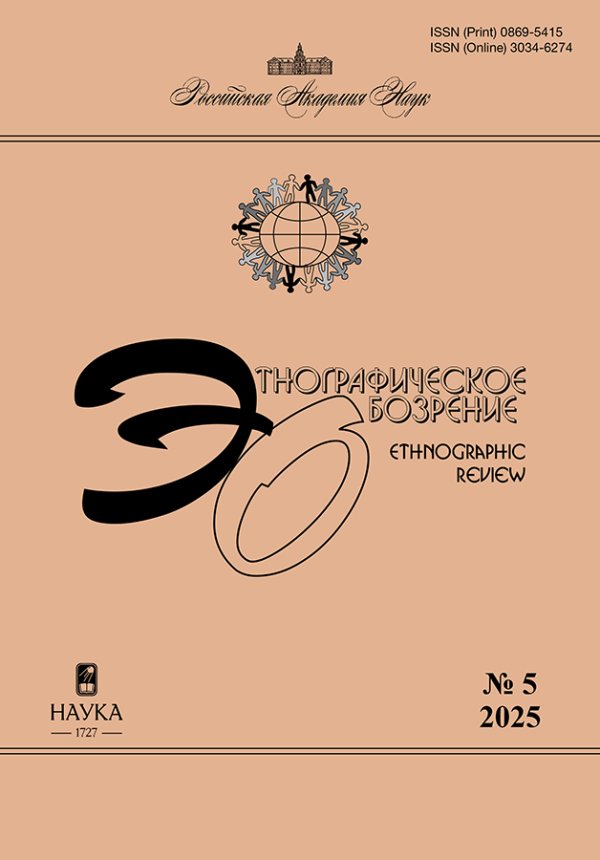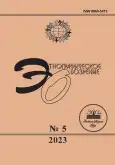Share and erase: agency formation among children and adults with mental disorders
- Authors: Petrov K.A1,2
-
Affiliations:
- European University at St. Petersburg
- Russian Presidential Academy of National Economy and Public Administration
- Issue: No 5 (2023)
- Pages: 178-193
- Section: Articles
- URL: https://journals.rcsi.science/0869-5415/article/view/233757
- DOI: https://doi.org/10.31857/S0869541523050111
- EDN: https://elibrary.ru/YDSJQB
- ID: 233757
Cite item
Full Text
Abstract
Keywords
About the authors
K. A Petrov
European University at St. Petersburg;Russian Presidential Academy of National Economy and Public Administration
Email: kpetrov@eu.spb.ru
References
- Клепикова А.А. Рец. на: Disability in Eastern Europe and the Former Soviet Union: History, Policy and Everyday Life / Eds. M. Rasell, E. Iarskaia-Smirnova. N.Y.: Routledge, 2014 // Антропологический форум. 2015. № 26. С. 222-244.
- Колядов Д. Значение говорящего: проблема участия людей с речевыми нарушениями в коммуникативном взаимодействии // Laboratorium: журнал социальных исследований. 2020. Т. 12 (3). С. 100-125. https://doi.org/10.25285/2078-1938-2020-12-3-100-125
- Курленкова А.С. Инвалидность как эффект практик: попытка новой концептуализации // Обратная сторона Луны, или что мы не знаем об инвалидности: теория, репрезентации, практики / Отв. ред. А.С. Курленкова, Е.Э. Носенко-Штейн. М.: ООО "Издательство МБА", 2018. С. 25-42.
- Носенко-Штейн Е.Э. Антропология инвалидности: проблемы и задачи // Этнографическое обозрение. 2018. № 1. С. 5-11. https://doi.org/10.7868/S0869541518010013
- Тарасенко Е. А. Социальная политика в области инвалидности: кросс-культурный анализ и поиск оптимальной концепции для России // Журнал исследований социальной политики. 2004. Т. 2 (1). С. 7-28.
- Callon M., Law J. Agency and the Hybrid Collectif // Mathematics, Science, and Postclassical Theory / Eds. B. Herrnstein Smith, A. Plotnitsky. Durham: Duke University Press, 1997. P. 95-117.
- Emirbayer M., Mische A. What is Agency? // American Journal of Sociology. 1998.Vol. 103 (4). P. 962-1023. https://doi.org/10.1086/231294
- Ferguson P.H., Nusbaum E. Disability Studies: What Is It and What Difference Does It Make? // Research & Practice for Persons with Severe Disabilities. 2012. Vol. 37 (2). P. 70-80.
- Latour B. Technology is Society Made Durable // A Sociology of Monsters / Ed. J. Law. L. Routledge, 1991. P. 103-131.
- McKearny P., Zoanni T.Introduction: For an Anthropology of Cognitive Disability // The Cambridge Journal of Anthropology. 2018. Vol. 36 (1). P. 1-22. https://doi.org/10.3167/cja.2018.360102
- Mol A. Ontological Politics: A Word and Some Questions // The Sociological Review. 1999. Vol. 47 (1). P. 74-89. https://doi.org/10.1111/j.1467-954X.1999.tb03483.x
- Mol A. Mind Your Plate! The Ontonorms of Dutch Dieting // Social Studies of Science. 2012. Vol. 43 (3). P. 379-396. https://doi.org/10.1177/0306312712456948
- Passoth J.-H., Peuker B., Schillmeier M.Introduction // Agency without Actors: New Approaches to Collective Action / Eds. J.-H. Passoth, B. Peuker, M. Schillmeier. L.: Routledge, 2012. P. 1-12.
- Watson N. Agency, Structure and Emancipatory Research: Researching Disablement and Impairment // Routledge Handbook of Disability Studies / Eds. N. Watson, S. Vehmas. L.: Routledge, 2013. P. 127-141.
Supplementary files










